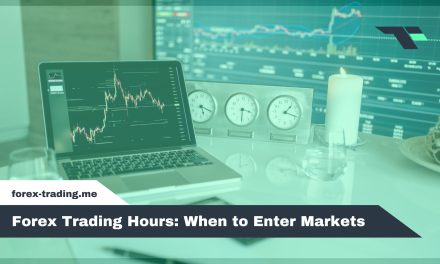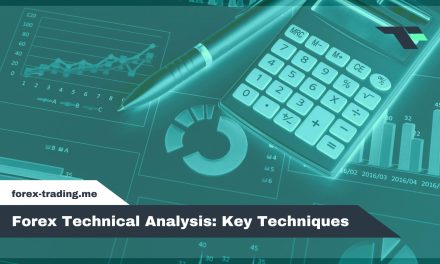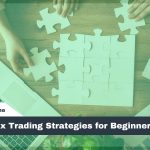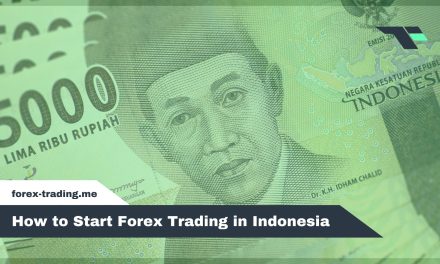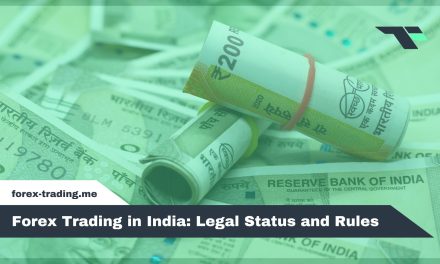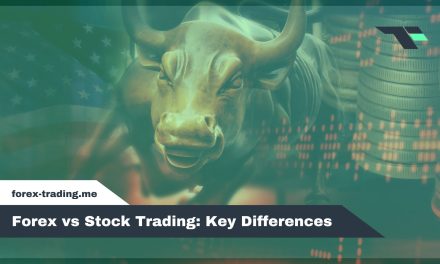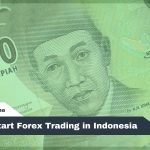
Forex vs CFD Trading: Which to Choose?

Forex trading focuses exclusively on currency pair exchanges in the world’s largest financial market with $6.6 trillion daily turnover, while CFD trading offers leveraged speculation across stocks, commodities, indices, and cryptocurrencies without asset ownership. Forex features tighter spreads and continuous market hours, making it ideal for day traders, whereas CFDs provide broader diversification with over 10,000 available instruments. Both involve leverage and overnight financing costs, but differ in regulatory frameworks and profit calculations. Understanding these distinctions reveals which approach aligns with specific trading objectives.
Table of Contents
Trading Basics Forex vs CFD Trading Overview
Forex trading involves the exchange of one currency for another in the world’s largest financial market, where participants speculate on the relative value changes between currency pairs like EUR/USD or GBP/JPY. Contracts for Difference (CFDs) are derivative instruments that allow traders to speculate on price movements of various assets without owning the underlying security, covering markets from stocks and commodities to indices and cryptocurrencies. The forex market dominates with $6.6 trillion in daily turnover, while the global retail CFD market has experienced rapid expansion at approximately 15% annual growth, reaching over $200 billion in daily trading volume.
Defining Forex Trading
Currency exchange represents the foundation of international commerce, enabling businesses and individuals to convert one nation’s money into another through the foreign exchange market. Forex trading involves the simultaneous buying and selling of currency pairs, where traders speculate on price movements between two currencies. The market operates on a spot basis, with most transactions settling T+2, meaning two business days after the trade date.
Key terminology includes “pip,” the smallest price movement in a currency pair, typically the fourth decimal place. A “lot” represents the standard trading unit, usually 100,000 units of the base currency. The “spread” refers to the difference between bid and ask prices. Major pairs like EUR/USD dominate trading activity, accounting for over 25% of the market’s daily $6.6 trillion turnover.
Understanding CFDs
Over 5 million retail traders worldwide utilize Contracts for Difference (CFDs), a derivative instrument that emerged in the early 1990s to provide leveraged exposure to underlying assets without requiring direct ownership. CFDs enable speculation on price movements across stocks, indices, commodities, and cryptocurrencies through a single trading account. When entering a CFD position, traders agree to exchange the difference between an asset’s opening and closing prices with their broker. This mechanism allows profit from both rising and falling markets through long and short positions. Modern brokers typically offer CFDs on over 10,000 instruments, providing extensive diversification opportunities. The leveraged nature of CFDs amplifies both potential profits and losses, making risk management essential for successful trading outcomes.
Market Size & Growth Trends
When examining the sheer scale of global trading activity, the foreign exchange market dwarfs virtually all other financial markets combined, with the Bank for International Settlements reporting an average daily turnover of $6.6 trillion in 2019.
CFD markets have demonstrated remarkable expansion, with retail CFD notional open interest surpassing $1.2 trillion in 2023. The CFD sector achieved approximately 15% compound annual growth rate from 2018 to 2023, reflecting increased demand for diversified trading instruments. While Forex maintains its position as the world’s largest financial market, CFDs continue gaining traction among traders seeking broader asset exposure beyond currency pairs.
As traders weigh the unparalleled liquidity of the forex market against the broader asset access offered by CFDs, it’s helpful to see these differences laid out side by side. The table below not only recaps the key metrics—daily volumes, growth rates and market maturity—but also highlights practical considerations like instrument variety, typical leverage ranges and settlement conventions. Use this as a quick reference to understand how each market’s scale and structure can influence your strategy and risk management.
| Attribute | Forex | CFDs |
|---|---|---|
| Daily Turnover | $6.6 trillion | $200 billion (retail) |
| Retail Growth (2018–2023) | 8–12 % annually | ~15 % CAGR |
| Market Maturity | Decades of established benchmarks | Rapid expansion since 1990s |
| Tradable Instruments | ~180+ currency pairs | 10 000+ stocks, indices, commodities, crypto |
| Typical Leverage Range | 30:1 (majors) to 20:1 (non-majors, ESMA cap) | 5:1 (stocks) to 30:1 (majors, EU limits) |
| Trading Hours | 24 hours Monday–Friday (global sessions) | Varies by underlying exchange hours |
| Settlement Cycle | Spot trades settle T+2; forwards and swaps vary | No expiry; daily financing applies |
| Spread Example (EUR/USD vs Major Index) | 0.5 pip average on EUR/USD | 1.2 pips average on FTSE 100 CFD |
| Diversification Potential | Limited to currency correlation strategies | Access to multi-asset portfolios in one account |
| Overnight Financing | Swap rates ~0.02 % daily | Financing rates 2–5 % p.a. above interbank |
| Regulation Focus | FCA, ASIC, NFA, ESMA, etc. | ESMA, MiFID II, FCA (US retail banned) |
| Risk Management Tip | Use small position sizes (micro lots) to keep risk < 2 % per trade | Monitor margin usage closely; close losing positions early |
This side-by-side view clarifies not only how forex remains the heavyweight in sheer volume, but also why CFDs appeal to those seeking diversification and targeted exposure. By considering the typical leverage, trading hours and financing costs in parallel, you can better align your choice with both your risk appetite and your broader portfolio goals.
Trading Mechanics Difference Between Forex and CFD Explained
Understanding how Forex and CFD trades execute in practice reveals fundamental differences that directly impact trading costs, position management, and market access. While Forex operates through spot transactions involving direct currency exchange with standardized lot sizes of 100,000 units, CFDs function as derivative contracts that mirror underlying asset price movements without actual ownership transfer. These structural distinctions create variations in margin requirements, commission structures, and available trading sessions that traders must consider when selecting their preferred instrument.
Spot Forex vs CFD Contract Structures
Two fundamentally different contract structures separate Forex trading from CFD trading, creating distinct mechanics that affect settlement, ownership, and financing costs. Spot Forex contracts involve direct currency exchanges that settle within two business days (T+2), establishing actual ownership of the underlying currency pairs. Traders primarily purchase one currency while simultaneously selling another at the prevailing bid-ask price.
CFDs operate as over-the-counter derivative contracts that mirror price movements without requiring physical settlement or expiry dates. These instruments track underlying asset performance without transferring ownership, allowing traders to speculate on price direction. However, CFD positions incur daily financing charges through overnight swaps, reflecting the cost of maintaining leveraged exposure. This structural difference means Forex traders hold actual currency positions, while CFD traders maintain synthetic exposure through derivative agreements.
Trading Instruments & Session Availability
The breadth of available trading instruments represents one of the most significant distinctions between Forex and CFD markets, with each offering vastly different asset universes and trading schedules. Forex markets provide access to over 180 currency pairs, operating continuously 24 hours daily from Monday through Friday across global sessions. This constant availability stems from currency trading occurring across multiple international financial centers as they open and close sequentially.
CFD markets offer substantially broader asset diversity, encompassing over 10,000 tradeable instruments including equity indices, individual stocks, commodities, and bonds. However, CFD trading hours mirror the underlying asset’s native market schedule. US equity CFDs trade exclusively during New York Stock Exchange hours from 9:30 AM to 4:00 PM Eastern Time, while commodity CFDs follow their respective exchange operating periods.
Spreads Commissions & Fees Analysis
Trading costs represent a fundamental differentiator between Forex and CFD markets, with each employing distinct fee structures that directly impact profitability across various trading strategies. Forex brokers primarily generate revenue through spreads, with EUR/USD averaging 0.1 to 1.5 pips, while CFD brokers typically charge commissions ranging from 0.1% to 0.2% per trade for equity positions, alongside wider spreads. Both instruments incur overnight financing costs, with swap rates applied to positions held beyond market close. For example, a $100,000 Forex position may cost approximately $20 daily in rollover fees, assuming a 0.02% swap rate. CFD traders face similar overnight charges, calculated based on the underlying asset’s financing rate, making cost analysis essential for position-sizing decisions.
The structural differences between Forex spot trades and CFD contracts directly shape how you manage positions, calculate costs, and choose trading hours. By comparing the mechanics side by side, you can quickly see which instrument aligns with your risk tolerance and strategy. Use the table below to understand how contract structure, financing, asset access, and fee models differ—providing a clear roadmap for traders weighing Forex against CFDs.
| Attribute | Forex | CFDs |
|---|---|---|
| Contract Structure & Settlement | Spot contract; direct currency exchange settles T+2, creating actual ownership of base and quote currencies | OTC derivative; no physical settlement or expiry, synthetic exposure maintained until position closed |
| Ownership & Expiry | Traders take ownership of currency pairs; no expiration beyond rollover if held | No ownership transfer; positions remain open until closed, rollovers applied daily |
| Financing Costs | Swap/rollover fees | Overnight financing based on underlying asset rate + markup (2–5% p.a.), varies by instrument |
| Margin Requirements | Typically 3.3% (30:1 leverage) for major pairs, 5%–10% for minors under ESMA rules | 5% for stocks, 10% for commodities, up to 30:1 for major FX CFDs; maintenance margin varies by broker |
| Tradable Assets | ~180+ currency pairs (majors, minors, exotics) | Over 10,000 instruments including equities, indices, commodities, bonds, cryptocurrencies |
| Trading Hours & Sessions | 24 hours Monday–Friday across global centers (Sydney→Tokyo→London→New York) | Restricted to underlying exchange hours (e.g., US equities 9:30 AM–4:00 PM ET; commodities per exchange schedule) |
| Cost Structure | Revenue via spreads; EUR/USD averages 0.1–1.5 pips; no direct commission on standard accounts | Commission 0.1%–0.2% per equity CFD trade + wider spreads (e.g., 1.2 pips on major indices) |
| Typical Spread/Commission Example | EUR/USD spread ~0.5 pip for retail accounts | FTSE 100 CFD spread ~1.2 pips + £0 commission on some providers |
| Underlying Exposure | Direct exposure to FX rates; P/L based on pip movement and lot size | Synthetic exposure mapped to underlying asset price changes; P/L reflects contract size and margin |
| Position Management | Rolling spot positions via swaps; ability to hold long/short without expiration beyond rollover costs | No expiry but daily financing charges; positions liquidated if margin falls below maintenance level |
| Risk & Cost Analysis Tip | Calculate swap costs and adjust position size; be wary of volatile roll periods (e.g., end of month) | Factor in higher financing rates for leveraged assets; compare commission vs spread on index or equity CFDs |
This comparison clarifies that Forex offers straightforward, high-liquidity currency trading with minimal contract complexity, whereas CFDs grant broader asset access and flexible position durations—but at the expense of higher financing rates and variable fees. By weighing each row of this table against your capital and time horizon, you can pinpoint which market mechanics support your trading goals.
Regulatory Insights for Forex or CFD Trading
Regulatory frameworks governing Forex and CFD trading vary considerably across jurisdictions, with authorities like the FCA, ASIC, and ESMA implementing distinct licensing requirements and compliance standards for brokers offering these instruments. Major regulatory changes, such as ESMA’s 2018 leverage restrictions capping major currency pairs at 30:1 and the complete prohibition of retail CFD trading in the United States by CFTC and NFA, directly impact trading conditions and market accessibility. Understanding these regulatory differences becomes essential for traders, as protection mechanisms like the FCA’s Financial Services Compensation Scheme covering up to £85,000 in broker insolvency cases can influence both broker selection and risk exposure.
Licensing & Oversight for Forex Brokers
When entering the Forex market, traders must verify that their chosen broker operates under proper licensing from recognized regulatory authorities, as this oversight forms the foundation of legitimate trading operations. Major regulatory bodies include the UK’s Financial Conduct Authority (FCA), Australia’s Securities and Investments Commission (ASIC), and the U.S. National Futures Association (NFA). These authorities enforce strict capital requirements, with the FCA mandating minimum capital of £730,000 for new firms and ASIC requiring AUD 1 million in tier-1 capital for retail Forex providers. Among over 1,200 registered Forex brokers worldwide, legitimate operators must demonstrate adequate capitalization, maintain segregated client funds, and provide regular financial reporting. Traders should prioritize brokers displaying clear regulatory registration numbers and compliance documentation.
Compliance Requirements for CFD Providers
CFD providers operate under markedly more restrictive compliance frameworks than their Forex counterparts, particularly following the European Securities and Markets Authority’s (ESMA) thorough regulatory overhaul in 2018. These regulations mandate standardized risk warnings, stating that 76% of retail CFD accounts lose money, which must be prominently displayed across all marketing materials and trading platforms.
MiFID II enforces strict best execution policies, requiring brokers to demonstrate ideal trade routing. Margin requirements vary by asset class, with major currency pairs capped at 30:1 leverage. U.S. regulators prohibit CFD offerings to retail clients entirely, forcing American traders toward regulated futures or options markets instead.
Trader Protection Mechanisms
Financial safeguards represent the invisible safety net that separates legitimate brokers from questionable operators, with both Forex and CFD trading environments offering distinct layers of protection that directly impact how traders’ capital and potential losses are managed.
Negative balance protection prevents traders from losing more than their account balance, a mandatory requirement under ESMA for EU-based brokers. Fund segregation guarantees client money remains separate from broker operational funds, with the FCA mandating full segregation of client assets and ASIC requiring CFD providers to segregate retail client funds. Compensation schemes provide additional security in cases of broker insolvency, offering predetermined recovery amounts. Client money rules establish strict protocols for handling trader deposits, creating regulatory frameworks that distinguish compliant brokers from unregulated entities across both trading environments.
Navigating the patchwork of global regulations can feel like decoding a new language—yet these rules are precisely what shield your capital and define which markets you can access. Below is a concise snapshot of how major jurisdictions treat Forex and CFD brokers differently, highlighting capital mandates, leverage caps, mandatory risk disclosures, and protective schemes. Use this as a guide to verify that any broker you consider meets the regulatory benchmarks best suited to your trading strategy and risk tolerance.
| Region | Regulatory Authority | Forex Broker Requirements | CFD Provider Requirements |
|---|---|---|---|
| Europe | ESMA / MiFID II | Leverage capped at 30:1 for majors, 20:1 for non-majors; capital adequacy; client fund segregation | Mandatory 76% loss-rate warning; margin limits by asset; negative balance protection required |
| United Kingdom | FCA | Minimum capital £730,000; strict reporting; client money segregation; best execution | Same as Europe; additional FCA compensation scheme covering up to £85,000 in insolvency |
| Australia | ASIC | Tier-1 capital of AUD 1M; licensing; audit and compliance checks | Client funds segregation; standardized risk warnings; ASIC-mandated client compensation coverage |
| United States | CFTC / NFA / SEC | Registration with NFA; capital requirements; disclosure obligations | Retail CFDs prohibited—traders must use futures/options instead |
Advantages & Drawbacks Forex vs CFD Trading
When evaluating Forex and CFD trading, several critical factors emerge that can greatly impact trading performance and risk exposure. Forex markets offer superior liquidity with tighter spreads due to the $6.6 trillion daily volume, while CFDs provide access to over 10,000 instruments across multiple asset classes, enabling broader portfolio diversification. However, both instruments carry substantial risks through leverage mechanisms and hidden costs, with ESMA data indicating that 76% of retail CFD traders experience losses, making a thorough understanding of each trading method’s advantages and limitations essential for informed decision-making.
Liquidity and Volatility Considerations
Liquidity emerges as one of the most defining characteristics separating Forex markets from the broader CFD landscape, with profound implications for trading costs and execution quality. Major currency pairs like EUR/USD demonstrate exceptional liquidity, often exceeding 1 million ticks per day, resulting in tight bid-ask spreads and minimal price slippage during execution. This high liquidity stems from Forex’s massive $6.6 trillion daily turnover and contributes to relatively stable volatility, with EUR/USD averaging approximately 5% annual volatility.
CFD markets present a more varied liquidity profile. While popular indices and major commodities offer reasonable liquidity, many CFDs on small-cap stocks trade fewer than 10,000 shares daily, creating spreads 2-3 times wider than major Forex pairs. This disparity directly affects trading costs and execution reliability across different CFD underlying assets.
Leverage Opportunities & Associated Risks
Leverage acts as a double-edged sword in both Forex and CFD trading, fundamentally altering the risk-reward dynamics through borrowed capital that amplifies potential gains and losses. ESMA regulations cap Forex leverage at 30:1 for major currency pairs and 20:1 for non-majors, while CFD leverage restrictions are more stringent, limiting stocks to 5:1 and commodities to 10:1 within the EU. These margin requirements directly impact capital efficiency and risk exposure. Retail traders utilizing 50:1 leverage face margin calls after merely a 2% adverse price movement, demonstrating how quickly positions can turn problematic. Higher leverage ratios in Forex markets provide greater capital efficiency compared to CFDs, but this advantage comes with proportionally increased risk of rapid account depletion through margin calls.
Market Access & Portfolio Diversification
Beyond the mechanics of leverage and margin requirements, the fundamental distinction between Forex and CFD trading lies in the breadth of available markets and the resulting opportunities for portfolio construction. Forex trading restricts participants to currency pairs, typically offering access to 180+ major, minor, and exotic combinations. While this provides deep liquidity and tight spreads, it limits diversification to correlations between different economies and monetary policies.
CFD trading expands market access considerably, with top brokers providing exposure to over 2,000 equities, 25 major indices, and 50 commodities, plus cryptocurrency markets. This broader universe enables traders to construct diversified portfolios within a single account, spreading risk across asset classes and geographic regions. Portfolio studies demonstrate that such diversification can reduce maximum drawdown by up to 25%, creating more stable trading performance.
Overnight Financing and Hidden Costs
Two distinct cost structures separate Forex and CFD trading when positions remain open beyond the daily rollover period, creating significant implications for holding strategies and long-term profitability. Forex overnight swaps typically reflect interest rate differentials between currency pairs, with EUR/USD swaps averaging ±0.02% of notional value per day. These swap rates can generate positive or negative cash flows depending on the direction of the trade and underlying interest rates.
CFD financing proves substantially more expensive, with overnight rates ranging from 2% to 5% per annum above interbank rates. This cost structure makes CFDs less suitable for long-term positions compared to Forex. Additionally, hidden spreads on exotic currency pairs can exceed 3 pips, while CFD commissions and wider spreads often surprise inexperienced traders, emphasizing the importance of calculating total carrying costs before position entry.
As traders balance the promise of razor-tight spreads against the allure of diversified market access, understanding where each instrument excels can save both time and capital. The following table crystallizes the key advantages and limitations of Forex and CFD trading—highlighting liquidity metrics, leverage caps, diversification potential, and carrying costs—to help you quickly pinpoint which model aligns with your trading style and risk tolerance.
| Attribute | Forex Trading | CFD Trading |
|---|---|---|
| Liquidity | $6.6 trillion daily turnover; EUR/USD ≈ 1 million ticks/day | Popular indices and commodities liquid; small-cap stocks < 10 000 shares/day |
| Typical Spread | 0.1–1.5 pips on EUR/USD; average ≈ 0.5 pip | 1.2 pips on major indices; equity CFDs often 0.1–0.2 % commission |
| Annual Volatility (EUR/USD) | ~ 5 % | Varies by asset: major indices ~ 15 %; small-cap stocks > 30 % |
| Leverage Caps (EU/ESMA) | 30:1 for majors; 20:1 for non-majors | 30:1 on major FX CFDs; 5:1 on stock CFDs; 10:1 on commodity CFDs |
| Margin Call Threshold | 2 % adverse move at 50:1 leverage wipes $10 000 margin | 10 % equity drop on a 10:1 leveraged position triggers call |
| Asset Universe | ~ 180+ currency pairs | 10 000+ instruments: stocks, indices, commodities, crypto |
| Diversification Benefit | Limited to FX correlations; portfolio drawdown reduction ≈ 5 % | Multi-asset exposure; drawdown reduction up to 25 % |
| Overnight Carrying Cost | Swap rates ~ 0.02 % of notional/day (± depending on currency carry) | Financing 2–5 % p.a. above interbank; no positive carry on most assets |
| Hidden Cost Risk | Occasional wider spreads on exotics > 3 pips | Wider spreads + daily financing can erode returns by up to 2 %/month |
| Ideal Trading Horizon | Short- to medium-term positions; hold across rollover if carry is positive | Short-term swing trades; avoid long-term holding due to financing |
| Regulatory Protections | FCA, ASIC, NFA oversight; segregated funds; negative balance protection in EU | ESMA-mandated risk warnings; FCA compensation up to £85 000; US retail CFDs banned |
| Primary Benefit | Deep liquidity with minimal slippage | Broad asset access, enabling sector and geographic diversification |
| Main Drawback | Limited to currency correlations; exposures confined to FX rates | Higher carrying costs; variable liquidity, especially in niche assets |
By weighing these dimensions side by side—whether it’s the stability of Forex’s bid-ask spreads or the broadened asset palette of CFDs—you can more confidently align your choice with both your capital base and your strategic goals.
Real-World Scenarios in Forex or CFD Trading
Examining actual trading scenarios reveals how profit and loss calculations differ markedly between Forex and CFD positions, particularly regarding pip values, lot sizes, and margin requirements. A standard Forex trade involves calculating gains through pip movements against predetermined lot sizes, while CFD positions require careful attention to leverage ratios and margin calls that can quickly eliminate trading capital. These real-world examples demonstrate how position sizing and notional exposure create distinct risk profiles that directly impact return on investment across both instruments.
Sample Forex Trade Pip Profit Calculation
Understanding pip calculations serves as the foundation for measuring profitability in Forex trading, where precise mathematical formulas determine actual monetary gains or losses from currency movements. A practical example demonstrates this process: when a trader purchases EUR/USD at an entry price of 1.1000 and subsequently sells at 1.1050, the price difference equals 50 pips. For a standard lot position, each pip typically equals $10 in value. Consequently, the profit calculation becomes straightforward: 50 pips multiplied by $10 per pip equals $500 total profit. This standardized pip-based system allows traders to quickly assess potential returns and compare opportunities across different currency pairs, making it an essential skill for anyone engaging in Forex markets where precision in profit calculations directly impacts trading decisions.
Sample CFD Position Leverage & Margin Call
While Forex trading relies on pip calculations to determine profit outcomes, Contract for Difference (CFD) positions operate through a different mechanism that emphasizes leverage ratios and margin requirements, creating scenarios where traders can face considerable account impacts from relatively small price movements.
Consider a trader purchasing 1,000 shares of stock XYZ through a CFD at $20 per share with 10% margin requirements. This position requires $2,000 initial margin rather than the full $20,000 position value. When XYZ drops to $18 (a 10% decline), the trader’s equity falls to $1,800, dropping below the maintenance margin threshold of approximately $1,900, triggering an immediate margin call.
- Initial margin: $2,000 required for $20,000 position exposure
- Price decline: 10% stock drop reduces equity considerably
- Maintenance margin: Threshold around $1,900 protects broker risk
- Margin call: Automatic trigger demands additional funds or position closure
Comparative ROI Analysis Across Instruments
When traders allocate identical margin amounts across Forex and CFD positions, the return-on-investment calculations reveal nuanced differences that extend beyond simple percentage movements in underlying assets. Using $10,000 margin at 10:1 leverage creates $100,000 notional exposure in both markets. A 1% favorable price movement generates $1,000 profit, yielding 10% ROI on the margin used. However, net returns diverge due to financing costs.
Forex positions typically incur overnight swap rates based on interest rate differentials between currency pairs, while CFD positions face financing charges that can reduce net returns by approximately 1-2% annually. These seemingly minor cost differences compound over time, making Forex marginally more efficient for medium-term positions, though CFDs offer broader asset diversification benefits.
Real trading examples often reveal nuances that raw theory can’t capture. By viewing Forex pip calculations, CFD margin triggers, and ROI comparisons side by side, you’ll quickly see how each approach affects capital exposure, profit potential, and risk management. Use the table below as a concise reference to understand how position size, leverage, and costs combine to shape real-world outcomes in both markets.
| Scenario | Key Parameters | Profit Calculation | Risk Trigger | Cost Considerations |
|---|---|---|---|---|
| Forex Trade Pip Profit | Entry: EUR/USD 1.1000, Exit: 1.1050Standard lot (100 000 units) | 50 pips × $10 per pip = $500 profit | Minimal slippage due to high liquidity; no margin call unless trimmed by rollover | Overnight swap ≈ 0.02 % of notional (~$20/day on $100 000) |
| CFD Position Leverage & Margin | 1 000 shares at $20; 10 % initial margin ($2 000)Maintenance margin ≈ $1 900 | Not applicable (loss realized via equity drop) | Price drop from $20 to $18 (10 %) reduces equity below $1 900, triggering margin call | Daily financing 2–5 % p.a.; commissions 0.1–0.2 % on stock CFDs |
| Comparative ROI Analysis | $10 000 margin at 10:1 → $100 000 exposure in both markets1 % favorable move | $1 000 profit = 10 % ROI on margin | Forex: rollover costs accumulate; CFD: financing charges erode returns | Forex swap costs minimal for short-term holds; CFD financing reduces net ROI by ~1–2 % annually |
Avoiding Errors Difference Between Forex and CFD Market Pitfalls
Both Forex and CFD trading carry significant risks that can lead to substantial losses, with approximately 80% of retail Forex traders and 76% of retail CFD accounts losing money according to industry data. The most critical errors include neglecting proper risk management protocols, using excessive leverage that triggers devastating margin calls, and making trading decisions without conducting thorough fundamental or technical analysis. These pitfalls often compound each other, as traders who skip analytical preparation frequently resort to overleveraging positions while ignoring essential protective measures like stop-loss orders.
Overlooking Risk Management Techniques
Most traders underestimate the critical importance of implementing systematic risk management techniques, leading to account devastation that could have been entirely preventable through disciplined protocols.
Without using stop-loss orders, proper position sizing, and risk-reward ratios, traders expose themselves to catastrophic losses regardless of whether they trade Forex or CFDs. Research demonstrates that trading strategies capping risk per trade at 1%–2% of account balance have a 60%–70% higher chance of long-term profitability than those risking 5%+ per trade.
Essential risk management components include:
- Stop-loss orders to automatically exit losing positions at predetermined levels
- Position sizing calculations based on account balance and risk tolerance
- Risk-reward ratios of at least 1:2 to guarantee profitable trades offset losses
- Drawdown limits to prevent emotional decision-making during losing streaks
Overleveraging Leading to Margin Calls
Among the gravest mistakes traders commit, overleveraging stands as the primary catalyst for rapid account destruction and forced liquidation scenarios. When traders utilize excessive leverage ratios, they amplify small price movements beyond their account’s capacity to withstand adverse market conditions. A trader using 100:1 leverage on a $10,000 account who opens a $1,000,000 position faces immediate vulnerability to even minor market fluctuations. A mere 1% adverse currency movement results in a $10,000 loss, completely wiping out the entire account balance and triggering an automatic margin call. This forced liquidation occurs when the account equity falls below the maintenance margin requirement, compelling brokers to close positions regardless of potential recovery. Such scenarios demonstrate how overleveraging transforms manageable market risks into catastrophic losses.
Skipping Fundamental & Technical Analysis
When traders bypass thorough fundamental and technical analysis before entering positions, they fundamentally navigate financial markets blindfolded, exposing themselves to preventable losses and missed opportunities. This critical oversight affects both Forex and CFD traders, though the analytical requirements differ considerably between markets.
For Forex trading, macroeconomic factors like interest rates, employment data, and central bank policies drive currency movements. CFD traders must analyze company fundamentals, earnings reports, and sector-specific developments. Meanwhile, technical analysis provides entry and exit timing for both instruments.
- 65% of consistently profitable traders combine fundamental and technical analysis approaches
- Traders relying solely on technical indicators experience 60% lower win rates during major economic events
- Economic calendars help anticipate high-impact news releases affecting market volatility
- Chart patterns and technical indicators optimize position timing and risk management strategies
By internalizing the most frequent missteps—skipping risk controls, overleveraging, and neglecting market analysis—you can transform potential vulnerabilities into strengths. The table below distills each pitfall into clear descriptions, highlights the impact with supporting data, and offers concise prevention tips to keep your capital protected.
| Pitfall | Description | Impact (Key Data) | Prevention Tip |
|---|---|---|---|
| Overlooking Risk Management Techniques | Failing to use stop-loss orders, proper position sizing, or risk-reward ratios exposes accounts to unchecked losses. | Strategies capping risk at 1–2% per trade enjoy 60–70% higher long-term profitability than those risking 5%+ per trade. | Always set stop-loss and size positions so each trade risks ≤2% of equity. |
| Overleveraging Leading to Margin Calls | Using excessive leverage (e.g., 100:1) amplifies small price moves into catastrophic losses, triggering automatic liquidations. | A 1% adverse move on a $1,000,000 position wipes a $10,000 account, forcing a margin call. | Limit leverage to match risk tolerance; avoid exposure over 30:1 for majors. |
| Skipping Fundamental & Technical Analysis | Trading without analyzing macroeconomic or company-specific data—and ignoring chart signals—leads to blind entries and missed exits. | 65% of profitable traders combine both analyses; those using only technicals see 60% lower win rates in volatile events. | Consult economic calendars and earnings reports; confirm signals before entry. |
Decision Guide Forex vs CFD Trading Selection
Selecting between Forex and CFD trading requires traders to systematically evaluate three critical factors that directly impact performance outcomes and risk exposure. The decision-making process begins with aligning personal trading objectives to market characteristics, followed by careful assessment of broker platforms and their specific features for each instrument type. Successful traders then develop targeted strategies that account for prevailing market conditions, regulatory environments, and the distinct operational mechanics of their chosen trading vehicle.
Aligning with Personal Trading Objectives
The foundation of successful trading lies in matching one’s personal objectives with the specific characteristics of each financial instrument. Traders must honestly assess their risk tolerance, investment horizon, and profit targets to determine whether Forex’s high liquidity environment or CFD’s diversified asset exposure better serves their goals.
Statistical data reveals that 40% of retail traders identify as day traders, who typically gravitate toward Forex due to its tight spreads and continuous market hours. Conversely, 60% engage in swing-trading or position-trading strategies, increasingly utilizing CFDs for portfolio diversification across multiple asset classes.
- Day traders: Benefit from Forex’s superior liquidity and lower transaction costs
- Swing traders: Leverage CFD’s broader asset selection for strategic positioning
- Risk-averse traders: May prefer Forex’s predictable spread structures
- Diversification seekers: Find CFD’s multi-asset access more suitable
Choosing a Suitable Broker & Platform
Evaluating broker quality requires traders to examine fundamental differences between Forex-specialized and CFD-focused platforms, as each trading instrument demands distinct technological capabilities and regulatory frameworks. Top Forex brokers like IG, OANDA, and Saxo Bank typically offer EUR/USD spreads averaging 0.6 pips, emphasizing currency pair depth and execution speed. Leading CFD brokers such as Plus500, CMC Markets, and IG provide zero-commission structures but compensate with wider spreads, averaging 1.2 pips on indices like FTSE 100. Critical selection criteria include regulatory status verification, platform functionality assessment covering charting tools and order types, spread comparison across intended trading instruments, demo account availability for testing strategies, and customer service quality. Forex-focused firms prioritize currency market data feeds, while CFD platforms emphasize multi-asset connectivity and broader market access capabilities.
Developing a Strategy for Market Conditions
Successful trading strategies must align with the distinct characteristics of each market type, as Forex’s 24-hour liquidity and CFD’s diverse asset exposure create fundamentally different environments for strategy implementation.
Trend-following strategies demonstrate superior performance in Forex markets, achieving 60% win rates during trending conditions due to sustained directional movements across currency pairs. CFD scalping on high-liquidity indices can generate 5-10 pips per trade with sub-5 millisecond latency, capitalizing on rapid price fluctuations in equity markets.
- Forex trending strategies work best during London-New York overlap sessions when volatility peaks
- CFD scalping requires ultra-fast execution platforms for indices and commodities during market opens
- Cross-market hedging between EUR/USD and German DAX CFDs reduces portfolio drawdown by 20%
- Algorithmic trading performs differently across asset classes, requiring separate backtesting protocols
Choosing between Forex and CFD trading means aligning your unique goals with the right market’s strengths. The table below replaces bullet lists with clear, concise statements—each separated by semicolons—to ensure readability and help you see at a glance which factors matter most as you make your decision.
| Decision Factor | Considerations | Actionable Tip |
|---|---|---|
| Aligning Personal Objectives | Risk tolerance: day traders (40 %) favor Forex’s tight spreads; risk-averse traders prefer predictable currency pairs; investment horizon: swing traders (60 %) use CFDs for longer holds; profit targets: determine if currency volatility or asset diversity aligns with your goals | Rate your risk tolerance (1–10), select preferred holding period, set target ROI; choose Forex for liquidity or CFDs for diversification accordingly |
| Choosing Broker & Platform | Regulatory oversight: verify FCA, ASIC, NFA listings for Forex; ESMA or local compliance for CFDs; spread vs commission: top Forex brokers average 0.6 pip on EUR/USD; leading CFD platforms zero commission but ~1.2 pip on indices; platform features: Forex offerings emphasize real-time currency feeds, CFD platforms provide multi-asset dashboards; support & testing: seek demo accounts and responsive customer service | Create a simple broker scorecard: compare spreads, platform latency, demo access, and support ratings before funding your account |
| Developing Market-Specific Strategy | Forex trend following: focus on London–New York overlap when EUR/USD volatility peaks (trend strategies yield ~60 % win rate); CFD scalping: target indices during market opens for 5–10 pips per trade with sub-5 ms execution; hedging: pair EUR/USD trades with German DAX CFDs to reduce drawdown by ~20 %; tech & backtesting: use separate protocols for currencies versus equities/commodities due to differing liquidity and slippage | Define clear entry and exit rules with risk parameters; backtest on historical data; begin with smaller positions until strategy performance is validated |
Key Takeaways for Forex or CFD Trading Choices
After examining the fundamental differences between Forex and CFD trading across mechanics, costs, regulation, and market access, traders must synthesize these comparisons to make informed decisions aligned with their specific objectives and experience levels. The choice between these instruments ultimately depends on individual factors such as preferred asset diversity, risk tolerance, available capital, and trading strategy requirements. Understanding how trader experience level influences the suitability of each instrument provides the final framework needed to select the most appropriate trading approach.
Summarizing Core Comparisons
The fundamental divergence between Forex and CFD trading centers on market focus, asset accessibility, and operational mechanics that directly influence trading costs and risk exposure.
Forex trading concentrates exclusively on currency pairs within the world’s most liquid market, offering average spreads of 0.5 pips on major pairs and continuous 24/5 availability. CFDs provide broader asset diversification across stocks, indices, commodities, and cryptocurrencies, though with higher average spreads of 1.2 pips on stock indices and trading hours limited to underlying exchange schedules.
- Liquidity advantage: Forex offers superior market depth and tighter spreads
- Asset diversity: CFDs enable multi-market exposure through single platform access
- Cost structure: Forex typically provides lower transaction costs for active traders
- Trading flexibility: CFDs allow portfolio diversification while Forex demands currency specialization
Recommendations by Trader Experience Level
While trading experience considerably influences instrument selection, matching trader sophistication to appropriate market complexity determines both learning efficiency and capital preservation outcomes. Novice traders typically benefit from Forex’s focused currency pair approach, with over 70% utilizing micro lots under 1,000 units to manage risk while learning fundamental analysis and position sizing through demo trading platforms. Intermediate traders often diversify their portfolios, allocating approximately 60% to Forex and 40% to CFDs, enabling both currency speculation and broader asset exposure for hedging strategies. Professional traders frequently leverage multi-asset CFD platforms with direct liquidity access, managing notional values exceeding $10 million across diversified instruments. Each experience level requires tailored approaches to maximize learning outcomes while preserving capital through appropriate instrument selection and position management techniques.
Bringing together the essential contrasts and matching them to trader profiles allows you to see, at a glance, which market mechanics and strategies align best with your experience and objectives. The table below distills both the core market differences and the ideal instrument for each trader level—ensuring your choice reflects liquidity needs, diversification goals, and risk management priorities.
| Aspect | Forex | CFDs |
|---|---|---|
| Liquidity | $6.6 trillion daily turnover; average 0.5-pip major spreads; 24/5 market access | Variable by asset; 1.2-pip index spreads; trading hours tied to underlying exchange |
| Asset Diversity | ~180 currency pairs; focus on FX correlations only | 10 000+ instruments including equities, indices, commodities, crypto; broad portfolio exposure |
| Cost Structure | Lower transaction costs for active traders; no direct commission on many accounts | Wider spreads plus 0.1-0.2 % equity commissions; higher overnight financing rates (2-5 % p.a.) |
| Trading Flexibility | Continuous sessions; ideal for day trading and scalping | Ability to hold multi-asset positions; better suited for swing and position trading |
| Novice Trader Recommendation | Use micro lots (< 1 000 units) to practice position sizing and fundamental analysis in a focused environment | Delay until comfortable with margin calls; start with major indices or high-liquidity equity CFDs on demo |
| Intermediate Trader Recommendation | Allocate ~60 % of capital to Forex for liquidity; use demo backtests to refine trend strategies | Allocate ~40 % to CFDs for sector hedging and diversification; combine with Forex for correlation plays |
| Professional Trader Recommendation | Leverage advanced APIs and algorithmic strategies in 24/5 FX market for precision execution | Utilize multi-asset CFD platforms with direct liquidity access; manage notional exposures > $10 million across assets |
Conclusion
The choice between Forex and CFD trading ultimately depends on individual risk tolerance, market expertise, and investment objectives. Forex offers superior liquidity and lower transaction costs for currency-focused strategies, while CFDs provide broader asset diversification across multiple markets. Both instruments carry significant leverage-related risks requiring careful risk management. Traders should evaluate regulatory environments, available capital, and preferred trading timeframes before selecting the most suitable approach for their financial goals.


